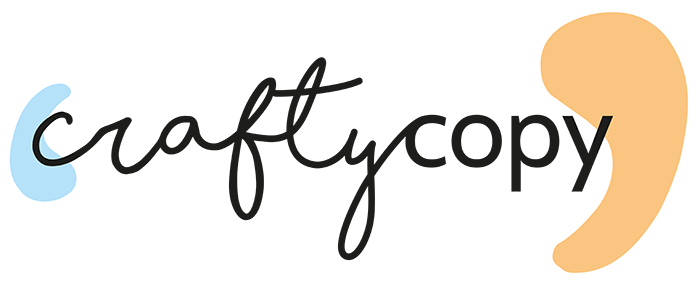How You Can Use Storytelling in Marketing to Connect & SELL
Sure, stories entertain, but did you know they could sell, too?
Yes. Using storytelling in marketing can really help you stand out from a crowd of ‘buy-this-now’ competitors.
It can make your audience think, “hey, she really gets me!” and “this brand can definitely help me.”
But here’s the problem: in most cases, you’ve either ignored storytelling altogether or… you’ve been spinning the wrong story.
Here’s why (and how to fix it so that you can actually start using storytelling as a marketing strategy).
Storytelling in marketing 1-0-OnceUponATime
Excuse the cheeky pun.
What does storytelling mean in marketing?
In marketing, storytelling means using a narrative (literally “telling a story”) to communicate a message to your audience.
This can take all kinds of different forms.
For example, storytelling as a marketing tool could involve long-form copy on a sales page, something that paints a picture of how your life feels right now and shows you the transformation you’ll experience after investing in that offer.
It could be a snappier social media post talking about how you took someone from A to B.
And… anything in between.
Now, don’t worry: it’s not about creating all sorts of characters and plots! You’re not writing a novel, after all.
Storytelling in marketing is simply about showing some kind of progression or transformation through your copy and content.
I’ll give you a proper storytelling marketing example later down the article, but first…
Why is storytelling important in marketing?
Storytelling is important in marketing because it helps you grab the attention of your specific target audience and make them want to invest in you. It also makes it easier for them to remember you.
And this isn’t my opinion: it’s a #fact. There’s an actual science and psychology behind marketing through storytelling!
Some quick stats to put marketing storytelling in context
Some specific chemicals are released in our brain when we’re told a story. Cortisol helps us formulate memories, dopamine regulates our emotional response, and oxytocin creates or maintains a connection because it’s associated with empathy
No wonder facts are 22 times more likely to be remembered when they’re part of a story! And being noticed and remembered can make all the difference for your business, especially since your audience is exposed to 6,000-10,000 marketing messages EVERY. SINGLE. DAY (yes, really)
Storytelling in marketing leads to a 30% increase in conversions. So, you’re A LOT more likely to turn those prospects into paying clients!
Why you might have been telling the wrong story
Using storytelling in marketing isn’t enough to succeed. You also need to tell the right story.
And here’s the mistake I encounter the most whenever I review existing marketing copy and content:
most business owners make this story about themselves.
Is that the case for you?
It might be if any of these sentences sound familiar:
“I couldn’t be more excited to announce that…”
“I started this business ten years ago, and it taught me that…”
“I’m passionate about what I do. That’s why I decided to turn it into my business.”
Those are some bad (but extremely common) marketing storytelling examples.
Now, don’t get me wrong: I’m NOT saying your story hasn’t got a place in your marketing. Not at all!
For example:
Can your own story inspire your ideal client to take action?
Is there a particular anecdote that can resonate with them based on their current situation?
Can your background show them why they should choose you instead of your competitors?
Does your story feed into a bigger mission that your audience is also on board with?
Then, go on, and share those stories!
And let’s not forget that personal stories can help you grow your own personal brand (well, it’s in the name).
Just… don’t plan your entire website copy and storytelling content around them.
“Then, what type of storytelling in marketing SHOULD I use, Giada?”
Why, I’m so glad you asked!
How you can start attracting (and converting) your audience by using copywriting and content marketing storytelling ✏️
There is ONE story you should tell ALL. THE. TIME.
The core of your content and communication should be based around it, too.
And when you get this brand story right? That’s when your storytelling in marketing becomes a lead-generating machine.
1. Understand and accept that your audience is the hero of your brand story
Sorry, I don’t mean to rain on your parade, but:
“The customer is the hero of our brand’s story, not us.”
(PS: I highly recommend his book, Building A Storybrand)
So, whenever you’re using storytelling in marketing, remember that the trick is to make them the protagonist of your overall brand story.
“But Giada, where does that leave ME?!”
2. Position yourself/your brand as the guide
Even though you’re not the hero, you still have a pretty cool part:
you’re the wise, trusted, and helpful guide.
You’re the Fairy Godmother to their Cinderella. The Obi Wan to their Luke Skywalker.
In other words, you are the one who can help the hero get to their happy ending (if they invest in your brand).
3. Tell their story
Now, I’m not gonna lie: I have a bespoke, proven framework for my web copy creation and storytelling content strategy.
So, I can’t reveal every single ingredient inside my secret sauce (it wouldn’t be fair on the badass clients who pay for it, would it?)
But, to give you a general idea, here are the core parts of that story:
INITIAL SITUATION: the hero (= your dream client) has some kind of pain point that’s making their life or business more complicated, stressful, overwhelming, etc.
INCITING INCIDENT: the hero meets a guide who offers them the tools to solve it. In fact, this guide has already helped other heroes overcome that initial struggle!
HAPPY ENDING: if the hero decides to invest in that guide, they will replace their current pain point with a positive outcome. They’ll go through a transformation and feel confident, empowered, relaxed, etc.
That’s what you should base your brand story on.
Not how passionate you are about collaborating with your clients. Not how excited you are to send them your products.
Successful storytelling in marketing is about how your brand can solve your hero’s problem and offer them a happy ending.
4. Amplify your content marketing storytelling by sticking to the same story
That brand story should be extremely clear on your website in particular.
Sadly, here’s another common problem when it comes to brand messaging and copy: each channel seems to tell a different story or focus on a separate aspect of it.
If you want your audience to understand and remember your story, you need to tell a consistent one. Brand story marketing won’t work if that narrative is unclear on all over the place.
Sure, some elements will change slightly depending on the format and campaign.
For example, if your client is experiencing three core pain points, you can tackle each of them individually in a different social media post.
But every piece of your content marketing storytelling strategy should still refer to that overall narrative.
Basically, you want your audience to know that, if they want to solve their current problem and achieve their happy ending, YOU are the best possible brand for it.
You can’t do that effectively if your message and story get muddled whenever you write or speak about them.
Use strategic messaging and storytelling in your marketing to attract your ideal clients
Storytelling will make a huge difference for your service-based business, but it’s just one piece of your marketing puzzle (which doesn’t actually have to keep feeling like a messy puzzle).
As a marketing message mentor, I give women complete clarity, a strategy, and a system to consistently market their services as the ONLY logical choice, attracting more perfect-fit, ready-to-start clients who want to work with THEM.
If that sounds like your kind of happy ending, let’s start writing the first chapter together.
More #crafty blog posts on this topic:











